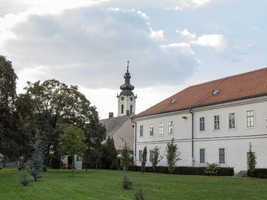
The past of Sremska Mitrovica and its immediate surroundings reaches back to the first beginnings of human life in the region of Srem and Pannonia, or about 7000 years before our era. The city changed not only its name, but also its physiognomy several times. From a wooden Illyrian Celtic settlement to an ancient city and capital, a medieval town with many lords to a modern industrial city in full swing of a new history. The Romans conquered Sirmium at the end of the 1st century AD. The city grew rapidly and by the middle of the 3rd century Sirmium became the economic center of the entire Pannonia. Decius emperors Trajan, Aurelian, Probus and Maximilian were born in it or in its surroundings, all Romanized Illyrian natives, sons of fortune, who reached the imperial throne with their outstanding military abilities. Confirmation of its exceptional importance within the Roman Empire, Sirmium received during the tetrarchy when it became one of the four capitals of the empire, a city with a large mint, a luxurious imperial palace, with water supply and thermal baths, a hippodrome, a theater and an amphitheater, a forum, numerous workshops, public baths, temples, as well as many public palaces and luxurious villas. The city surrendered to the Avars in 582. In the 9th century, Srem was part of Bulgaria and the role of Sirmium grew again, because after the Bulgarians accepted Christianity, a bishopric was established there. After the arrival of the Hungarians, Sirmium was alternately ruled by Byzantines and Hungarians, until 1180, when the Byzantine rule disappeared from this land forever, and only ruins remained of the once famous city. After frequent attacks by the Turks, the city fell under Ottoman rule in 1526. It was known as "Seher Mitrovica" and had a Muslim majority. During this period of a century and a half, the city experienced considerable development and acquired completely oriental features, which are still recognizable today. During this period, a large population from central Serbia fled from the Turkish oppression to Srem and settled there. At the end of the 19th century, the Sava border was pacified, and the new neighbor was a small and underdeveloped Serbia. In 1918, Sremska Mitrovica was annexed to the Kingdom of Serbs, Croats and Slovenes, later the Kingdom of Yugoslavia, and from 1941 to 1944. the city was called Croatia Mitrovica and was part of the Independent State of Croatia. The city was liberated on November 1, 1944. That date is taken as the beginning of the development of the city in the modern era.
To receive our best monthly deals
JOIN THE NEWSLETTER
